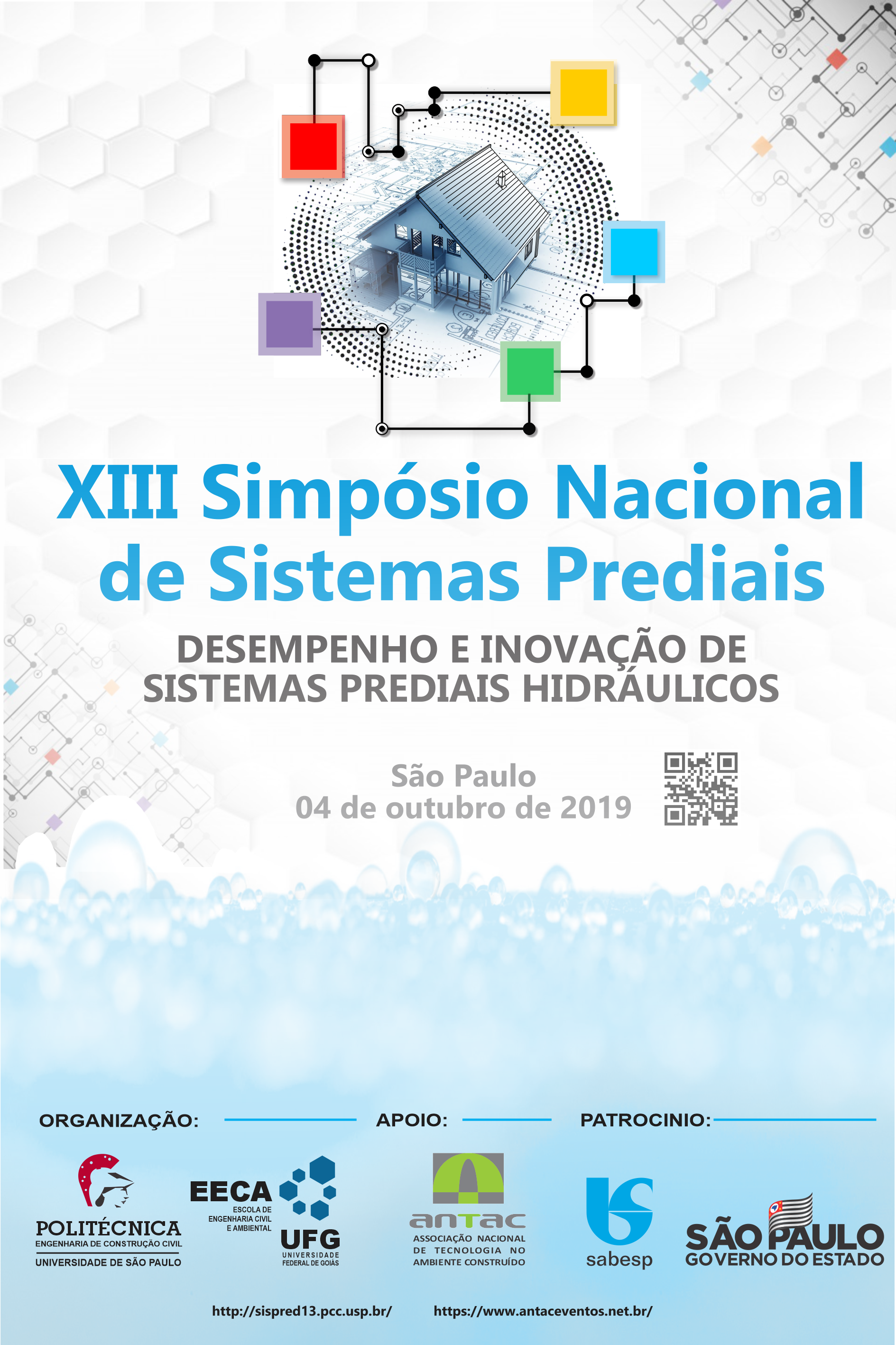Modelo de simulação estocástica da demanda de água em edifícios residenciais
DOI:
https://doi.org/10.46421/sispred.v1i.1574Palavras-chave:
Demanda de água, Vazão de projeto, Simulação computacionalResumo
RESUMO: Ao longo dos anos, pesquisadores vêm realizando estudos para investigar o perfil de consumo de água em edificações, o que contribui para o conhecimento sobre o correto dimensionamento dos sistemas hidráulicos prediais. No contexto dos métodos para caracterização das solicitações, as rotinas comumente utilizadas para obtenção das vazões de projeto foram propostas, em sua grande maioria, na metade do século XX. Esses modelos precisam ser revisados e adaptados para a realidade atual da conservação da água. Nos últimos anos, alguns estudos têm proposto modelos de simulação com foco de aplicação em sistemas de distribuição de água, devido ao comportamento aleatório e temporal das solicitações neste tipo de sistema. Neste estudo, foi proposto um modelo de simulação estocástico da demanda de água em edifícios residenciais, que contemplou a modelagem comportamental dos usuários e sua interação com o sistema, a fim de melhorar o processo de projeto de sistemas de distribuição de água. Para tal, foram revisadas as bases teóricas de modelos previamente propostos para a identificação de aspectos significativos para a construção de um novo modelo, que mesclaram a modelagem comportamental dos usuários e o sistema hidráulico. Simulações foram feitas com finalidade de aplicação do modelo proposto no trabalho. Ao comparar as vazões obtidas pela simulação e pelo Método dos Pesos Relativos nas tubulações do barrilete de um edifício hipotético, a redução da vazão de projeto variou entre 10 e 73%. Em termos de consumo de material, a redução ficou entre 25% e 63%.
Downloads
Referências
BARRETO, D.; MEDEIROS, O. Caracterização da vazão e frequência de uso de aparelhos sanitários. Ambiente Construído, v. 8, n. 4, p. 137–149, 2008.
BLOKKER, E. J. M.; VREEBURG, J. H. G.; Van Dijk, J. C. Simulating Residential Water Demand with a Stochastic End-Use Model. Journal of Water Resources Planning and Management, v. 136, n. January/February, p. 19–26, jan 2010. ISSN 0733-9496.
COURTNEY, R. A Multinomial Analysis of Water Demand. Building and Environment, v. 11, p. 203–209, 1976.
GONÇALVES, O. M. Formulação de modelo para o estabelecimento de vazões de projeto em sistemas prediais de distribuição de água fria. 1986. 203 p. Tese (Doutorado em Engenharia Civil) — Escola Politécnica, Universidade de São Paulo, São Paulo, 1986.
HUNTER, R. B. Methods of estimating loads in plumbing systems. [S.l.]: US Department of Commerce, National Bureau of Standards, 1940. 78–85 p.
ILHA, M. S. d. O.; GONÇALVES, O. M. Estudos de parâmetros relacionados com a utilização de água quente em edifícios residenciais. Boletim Técnico da Escola Politécnica da USP, v. 38, 1991.
INSTITUTO BRASILEIRO DE GEOGRAFIA E ESTATÍSTICA: Sinopse do censo demográfico. Rio de Janeiro, 2011. 261 p.
KONEN, T. P.; Brady Jr., P. M. A review of the parameters in the Hunter model for estimating the demand for water supply and drainage. In: W062 - Proceedings of the 3th International Symposium on Water Supply and Drainage for Buildings. Hørsholm, Denmark: CIB W062 - Water Supply and Drainage, 1974.
PETRUCCI, A. L.; GONÇALVES, O. M. Dimensionamento de redes prediais de água sob vazões reais. Ambiente Construído, v. 2, n. 4, p. 27–37, 2002.
OLIVEIRA, L. H. de et al. Modelling of water demand in building supply systems using fuzzy logic. Building Services Engineering Research and Technology, v. 34, n. 2, p. 145–163, maio 2013.
WISTORT, R. A new look at determining water demand in buildings: ASPE direct analytical method. In: American Society of Plumbing Engineers Convention. Kansas City, Missouri: American Society of Plumbing Engineers, 1994.

